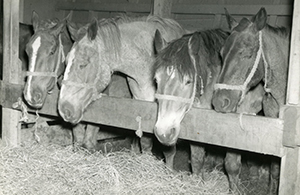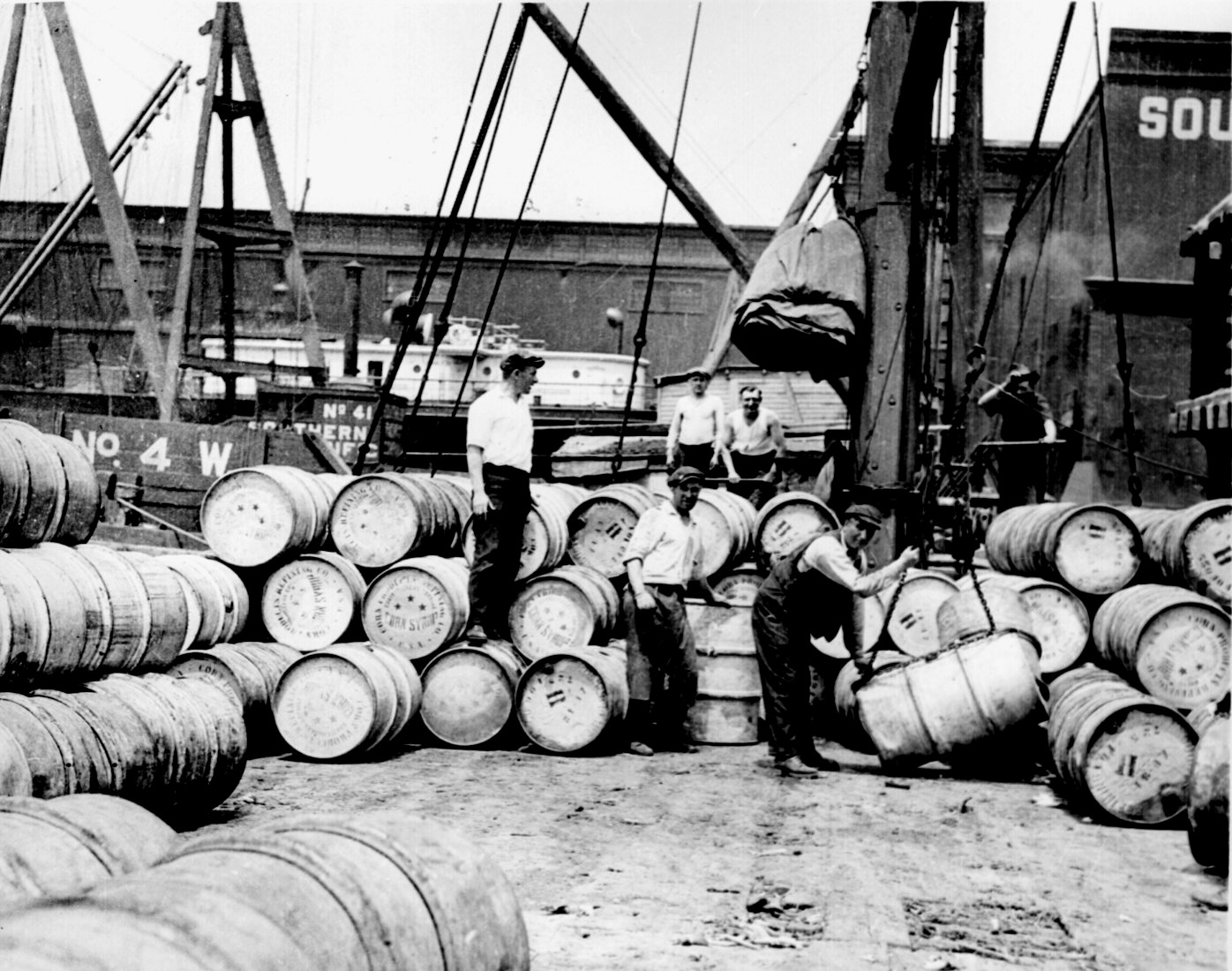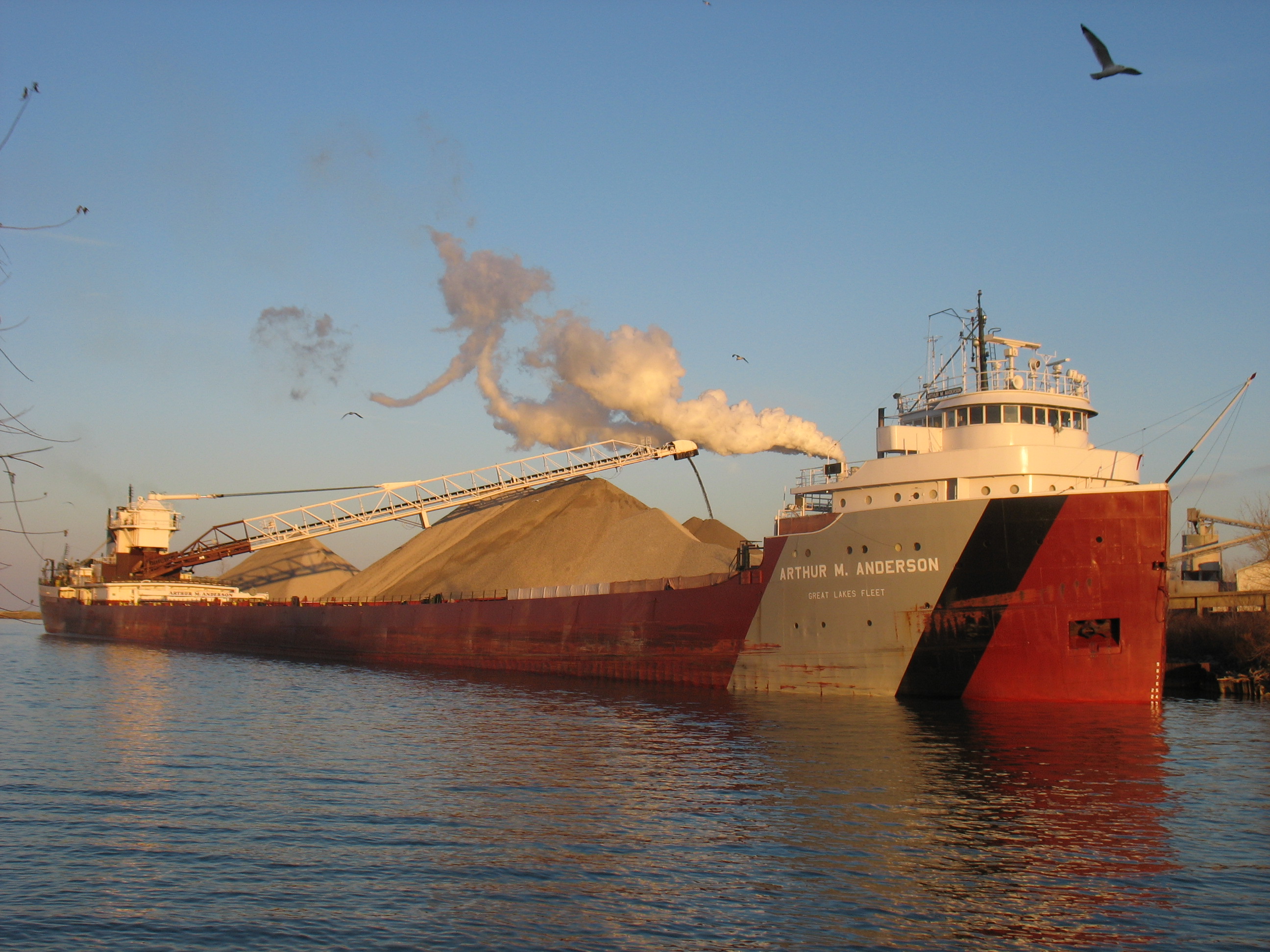|
Type C4 Ship
The Type C4-class ship were the largest cargo ships built by the United States Maritime Commission (MARCOM) during World War II. The design was originally developed for the American-Hawaiian Lines in 1941, but in late 1941 the plans were taken over by the MARCOM. Eighty-one ships were built as cargo or troopships in four shipyards: Kaiser Richmond, California (35 ships), Kaiser Vancouver, Washington (20 ships), Sun Shipbuilding and Drydock in Chester, Pennsylvania (20 ships) and Bethlehem Steel Sparrows Point, Maryland (6 ships). All ships were capable of , driven by a single screw steam turbine generating . Among the variations of the design were the . They were followed post-war by thirty-seven of the larger C4-S-1 class, also known as the ''Mariner'' class. List of Type C4 ships USS ''General G.O. Squier'', a C4-S-A1 General series C4-S-A1 DWT: 14,863. Built by Kaiser Shipyards at Permanente No. 3 in Richmond, California, for the US Army Transportation Corps then trans ... [...More Info...] [...Related Items...] OR: [Wikipedia] [Google] [Baidu] |
Kaiser Shipyards
The Kaiser Shipyards were seven major shipbuilding yards located on the United States west coast during World War II. Kaiser ranked 20th among U.S. corporations in the value of wartime production contracts. The shipyards were owned by the Kaiser Shipbuilding Company, a creation of American industrialist Henry J. Kaiser (1882–1967), who established the shipbuilding company around 1939 in order to help meet the construction goals set by the United States Maritime Commission for merchant shipping. Four of the Kaiser Shipyards were located in Richmond, California, and were called the Richmond Shipyards. Three other shipyards were located in the Pacific Northwest along the Columbia and Willamette rivers: the Oregon Shipbuilding Corporation and the Swan Island Shipyard in Portland, Oregon, and the Vancouver Shipyard in Vancouver, Washington. Henry Kaiser was known for developing new methods of shipbuilding, which allowed his yards to outproduce other similar facilities and b ... [...More Info...] [...Related Items...] OR: [Wikipedia] [Google] [Baidu] |
Seagoing Cowboys
Seagoing cowboys is a term used for men and ships used from 1945 to 1947 for United Nations Relief and Rehabilitation Administration and the Brethren Service Committee of the Church of the Brethren that sent livestock to war-torn countries. These seagoing cowboys made about 360 trips on 73 different ships. Most of the ships were converted World War II cargo ships with added cages and horse stalls. The ''Heifers for Relief project'' was started by the Church of the Brethren in 1942; in 1953 this became Heifer International. In the wake of the destruction caused by the Second World War, the historical peace churches in the United States (Church of the Brethren, the Society of Friends or "Quakers," and the Mennonites) sponsored relief missions to war-ravaged Europe, typically in cooperation with the United Nations Relief and Rehabilitation Administration (UNRRA). These relief missions usually took the form of transporting farm animals (such as heifers or horses), by transatlan ... [...More Info...] [...Related Items...] OR: [Wikipedia] [Google] [Baidu] |
Break Bulk Cargo
In shipping, break-bulk, breakbulk, or break bulk cargo, also called general cargo, refers to goods that are stowed on board ship in individually counted units. Traditionally, the large numbers of items are recorded on distinct bills of lading that list them by different commodities. This is in contrast to cargo stowed in modern intermodal containers as well as bulk cargo, which goes directly, unpackaged and in large quantities, into a ship's hold(s), measured by volume or weight (for instance, oil or grain). The term ''break-bulk'' derives from the phrase breaking bulk, a term for unloading part of a ship’s cargo, or commencing unloading the cargo. Ships carrying break-bulk cargo are often called general cargo ships. Break-bulk/general cargo consists of goods transported, stowed and handled piecemeal to some degree, typically bundled somehow in unit loads for hoisting, either with cargo nets, slings, or crates, or stacked on trays, pallets or skids. Furthermore, batches ... [...More Info...] [...Related Items...] OR: [Wikipedia] [Google] [Baidu] |
SS Aquarama
SS ''Aquarama'' was built as ''Marine Star'', one of five breakbulk cargo ships of the United States Maritime Commission (USMC) type C4-S-B5 having that C4 design variant. The ship was delivered to the War Shipping Administration (WSA) for operation in July 1945 just before the end of World War II and was operated until August 1946 by WSA's agent American Hawaiian SS Company. From September 1947 the ship was laid up except for brief periods in the James River. In 1952 the ship was converted into the largest passenger ship ever to operate in the Great Lakes. Ship History ''Marine Star'' ''Marine Star'' was built by Sun Shipbuilding & Drydock Co., Chester, Pennsylvania as one of five United States Maritime Commission (USMC) type C4-S-B5 breakbulk cargo ships, yard hull number 357, USMC hull number 752. The ship's keel was laid 18 October 1944, launched on 30 April 1945 and delivery to the War Shipping Administration (WSA) on 28 July 1945. The ship was registered as a freighter ... [...More Info...] [...Related Items...] OR: [Wikipedia] [Google] [Baidu] |
James River, Reserve Fleet
The James River Reserve Fleet (JRRF) is located on the James River in the U.S. state of Virginia at () near Fort Eustis. James River Reserve Fleet, a "ghost fleet,", is part of the National Defense Reserve Fleet. The Reserve Fleet ships in storage, called "mothballed", that can be ready for use if needed. Many are awaiting scrapping due to the age or condition of the ship. Some ships are used for target practice or as artificial reefs. A few ships became museum ships and other sold to private companies. Ships can be readied for use in 20 to 120 days during national emergencies or natural disaster. The U.S. Department of Transportation's Maritime Administration (MARAD) provides oversight of the James River Reserve Fleet. For the United States Navy ships the United States Navy reserve fleets stored these ships and submarines. The James River Reserve Fleet is the oldest National Defense Reserve Fleet (NDRF) opened in 1919. At the start of World War II all 300 ships in the fle ... [...More Info...] [...Related Items...] OR: [Wikipedia] [Google] [Baidu] |
Military Sea Transportation Service
Military Sealift Command (MSC) is an organization that controls the replenishment and military transport ships of the United States Navy. Military Sealift Command has the responsibility for providing sealift and ocean transportation for all US military services as well as for other government agencies. It first came into existence on 9 July 1949 when the Military Sea Transportation Service (MSTS) became solely responsible for the United States Department of Defense, Department of Defense's ocean transport needs. The MSTS was renamed the Military Sealift Command in 1970. List of Military Sealift Command ships, Military Sealift Command ships are made up of a core fleet of ships owned by the United States Navy and others under long-term-charter augmented by short-term or voyage-chartered ships. During a time charter MSC takes control of a merchant ship and operates it for the chartered amount of time. During this time the ship is crewed by civilian mariners and MSC pays for all expe ... [...More Info...] [...Related Items...] OR: [Wikipedia] [Google] [Baidu] |
Agwilines Inc
Agwilines Inc was a passenger and cargo shipping company of New York City. Agwilines is short for Atlantic, Gulf & West Indies Steamship Inc. AGWI Lines group operated four main lines in the 1910s, 1920s and 1930s: *Ward Line *Clyde line * Mallory Line * Porto Rico Line * Later the Clyde-Mallory Lines Agwilines Inc had offices in: New York, Philadelphia, Boston, Chicago, and Washington and was founded in 1908. In 1949, Graham-Newman Corporation (1926–1956), an investment corporation, purchased 70,000 shares of Agwilines Inc to become the controlling interest. Graham-Newman Corporation was founded by Benjamin Graham and Jerome Newm in 1926. Mallory Line Mallory Line, also called New York & Texas Steamship Company of New York City was founded in 1866 and closed in 1932. Mallory Line was an early family-owned passenger line, started by Charles Henry Mallory ''C. H. Mallory'' (1818–1890), in the coastwise trade. Mallory established C.H. Mallory & Company with his partner E ... [...More Info...] [...Related Items...] OR: [Wikipedia] [Google] [Baidu] |
Todd Brooklyn
Vigor Shipyards is the current entity operating the former Todd Shipyards after its acquisition in 2011. Todd Shipyards was founded in 1916, which owned and operated shipyards on the West Coast of the United States, East Coast of the United States and the Gulf. Todd Shipyards were a major part of the Emergency Shipbuilding Program for World War II. Vigor Shipyards In February 2011, Vigor Industrial purchased Todd for US$130 million. This included the Seattle, Everett and Bremerton operations. Today, Vigor Shipyards is a government repair subsidiary of Vigor Industrial. Originally, the Coast Guard wanted to acquire 25 Offshore Patrol Cutters (OPC) and spend about $8 billion for them. In April 2013, it was reported that Vigor proposed an Ulstein X-bow hull in the design competition for the OPC vessels. If successful in landing the contract, Vigor would have assembled the vessels at its Portland, Ore., shipyard. However, in February 2014, the USCG announced that Bollinger Shi ... [...More Info...] [...Related Items...] OR: [Wikipedia] [Google] [Baidu] |
Marine Robin (1943)
Marine is an adjective meaning of or pertaining to the sea or ocean. Marine or marines may refer to: Ocean * Maritime (other) * Marine art * Marine biology * Marine debris * Marine habitats * Marine life * Marine pollution Military * Marines, a naval-based infantry force ** United States Marine Corps ** Royal Marines of the UK ** Brazilian Marine Corps ** Spanish Marine Infantry ** Fusiliers marins (France) ** Indonesian Marine Corps ** Republic of China Marine Corps ** Republic of Korea Marine Corps ** Royal Thai Marine Corps *"Marine" also means "navy" in several languages: ** Austro-Hungarian Navy () ** Belgian Navy (, , ) ** Royal Canadian Navy () *** Provincial Marine (1796–1910), a predecessor to the Royal Canadian Navy ** Navy of the Democratic Republic of the Congo () ** Royal Danish Navy () ** Finnish Navy (, ) ** French Navy () ** Gabonese Navy () ** German Navy () ** Royal Moroccan Navy () ** Royal Netherlands Navy () ** Swedish Navy () Places * Marines, ... [...More Info...] [...Related Items...] OR: [Wikipedia] [Google] [Baidu] |
Lake Freighter
Lake freighters, or lakers, are bulk carrier vessels that operate on the Great Lakes of North America. These vessels are traditionally called boats, although classified as ships. Since the late 19th century, lakers have carried bulk cargoes of materials such as limestone, iron ore, grain, coal, or salt from the mines and fields of the upper Great Lakes to the populous industrial areas farther east. The 63 commercial ports handled 173 million tons of cargo in 2006. Because of winter ice on the lakes, the navigation season is not usually year-round. The Soo Locks and Welland Canal close from mid-January to late March, when most boats are laid up for maintenance. Crew members spend these months ashore. Depending on their application, lakers may also be referred to by their types, such as ''oreboats'' or ''ironboats'' (primarily for iron ore), ''straight deckers'' (no self-unloading gear), ''bulkers'' (carry bulk cargo), ''sternenders'' (all cabins aft), ''self unloaders'' (with self- ... [...More Info...] [...Related Items...] OR: [Wikipedia] [Google] [Baidu] |
Operation Magic Carpet
Operation Magic Carpet was the post- World War II operation by the War Shipping Administration to repatriate over eight million American military personnel from the European, Pacific, and Asian theaters. Hundreds of Liberty ships, Victory ships, and troop transports began repatriating soldiers from Europe in June 1945. Beginning in October 1945, over 370 navy ships were used for repatriation duties in the Pacific. Warships, such as aircraft carriers, battleships, hospital ships, and large numbers of assault transports were used. The European phase of Operation Magic Carpet concluded in February 1946 while the Pacific phase continued until September 1946. Planning As early as mid-1943, the United States Army had recognized that, once the war was over, bringing the troops home would be a priority. More than 16 million Americans were in uniform; and more than eight million of them were scattered across all theaters of war worldwide. Army Chief of Staff General George Marsh ... [...More Info...] [...Related Items...] OR: [Wikipedia] [Google] [Baidu] |
_passing_under_the_Golden_Gate_Bridge%2C_San_Francisco%2C_California_(USA)%2C_in_the_1950s.jpg)



.jpg)
.jpg)
_advertisement_1921.png)

